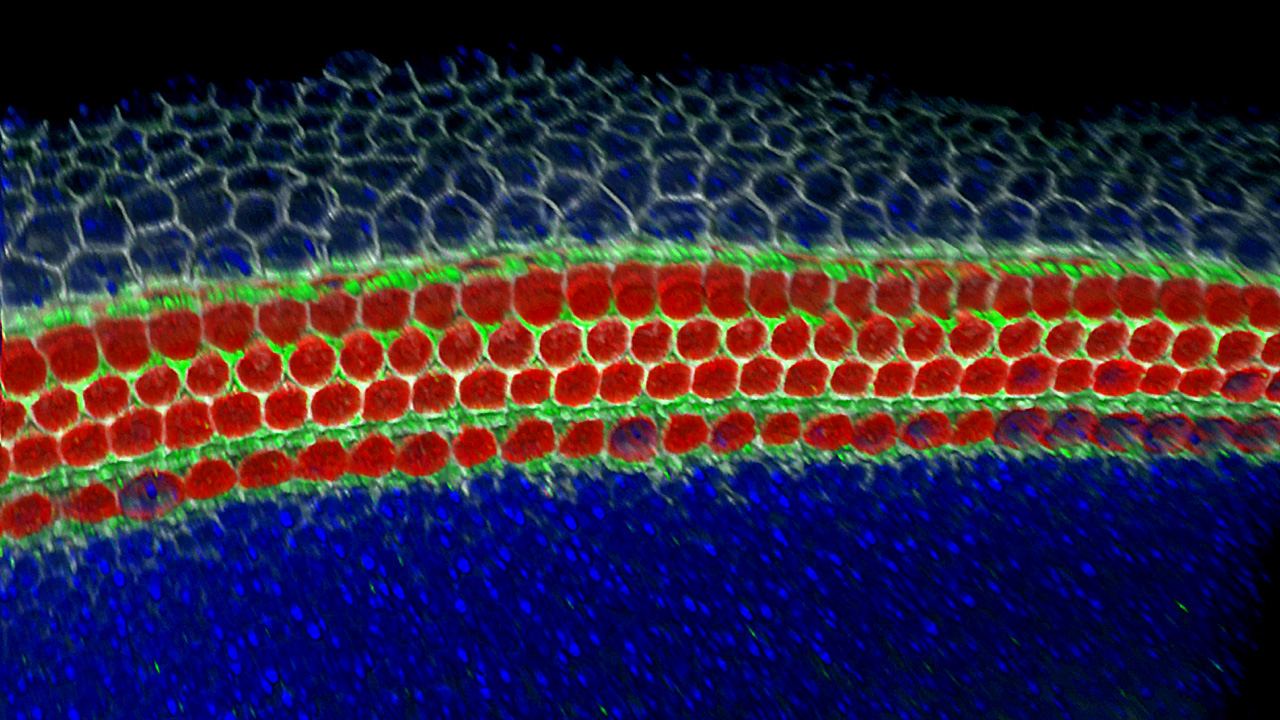New player identified in hair cell development
There are roughly 37.2 trillion cells in the human body, each of which can be categorized into one of about 200 different types. What’s remarkable about this immense number and diversity of cells is that they all came from a microscopic cluster that comprises the embryo. Many of these early progenitor cells start out the same, but they receive different programming instructions along the way that enable them to replicate and differentiate to form various tissues and organs.
Signalling pathways are cellular communication systems that govern whether a cell keeps dividing or stops, where it goes and, ultimately, what it becomes. One such pathway is Wnt (pronounced “wint”) signalling, a group of signal transmission networks that play a critical role in embryonic development. Dr. Alain Dabdoub, a scientist in Biological Sciences at Sunnybrook Research Institute, is studying how Wnt signalling affects inner ear development and hearing. A new study by his team has shown for the first time that Kremen1, a poorly understood member of the Wnt network, plays a direct role in the formation of the cochlea, a spiral-shaped auditory sensory organ in the inner ear.
“We know that initially at the very early stages [of development], Wnt signalling pushes cells to proliferate,” says Dabdoub. “Then division stops and cell differentiation occurs. We’re trying to find out what promotes this high level of Wnt and also what decreases it.”
Kremen1 is a protein that sits on the cell surface where it receives and transmits signals to the cellular machinery inside. Previous studies have shown that it blocks Wnt signalling, so Dabdoub and his team decided to investigate whether Kremen1 is involved in cell differentiation in the cochlea.
The researchers found that at an early embryonic stage Kremen1 was present in the precursor cells that give rise to hair cells and supporting cells. Shortly thereafter, Kremen1 was only found in the supporting cells that surround hair cells. When the researchers forced the precursor cells to overproduce Kremen1, fewer of them went on to become hair cells and more became supporting cells. In contrast, knocking down levels of Kremen1 resulted in more hair cells. The results were published in August 2016 in the journal Scientific Reports.
The cochlea contains tens of thousands of hair cells, which have hair bundles on their surface to detect and amplify sound. In mammals, when these cells are damaged or destroyed, they are not replaced and hearing loss results. Supporting cells, on the other hand, remain abundant during an individual’s lifetime and do not appear to be affected by the insults that batter hair cells.
Dabdoub’s research seeks to understand how the cochlea and hair cells form, as well as how these sensory cells can be replenished to restore hearing. “If you think about regeneration, where are the cells that you’re going to regenerate coming from?” he says.
The survival of supporting cells makes them excellent candidates from which to regrow hair cells, but they must first replicate to ensure there are enough to maintain a stable number of supporting cells and form new hair cells. Dabdoub thinks that exploiting the proliferation-enhancing properties of Wnt signalling will help achieve this. His finding that Kremen1 plays an important role in cell fate decisions in the cochlea will be critical to future efforts to regenerate hair cells. “This is a molecule that we should keep an eye on as we work towards regeneration,” he says.
Funding for this study came from the Hearing Health Foundation’s Hearing Restoration Project, Koerner Foundation and Sunnybrook Hearing Regeneration Initiative.






